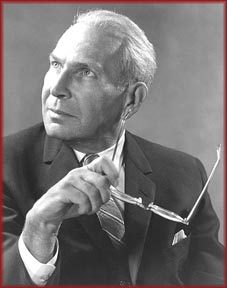




Marcel Dick
Marcel Dick was born on August 28, 1898, into a wealthy and musically talented Jewish family in Miskolc. He was the great-nephew of the 19th-century violin virtuoso Edouard Remenyi.[1] Dick was famed internationally as a master performer of the viola and violin, a composer, conductor, and teacher of music.
Dick was a child prodigy who made his debut on the violin at the age of six, before he even had learned to read music. He attended the Royal Academy in Budapest, where he studied music composition with the Hungarian composer Zoltan Kodaly. He received his degree in violin and by 1917, had become a professor of music. After serving in the Austro-Hungarian army during World War I, he became a member of the violin section of the Budapest Opera and the Budapest Philharmonic, and later was principal violist of the Vienna Symphony.
During his years in Vienna, Dick became a close friend and colleague of composer Arnold Schoenberg. He performed in the world premiere of many of Schoenberg’s pieces, including Serenade, Op. 24, which was the first time a 12-tone work was presented in public. Subsequently, he was one of the founders of the Kolisch Quartet, which specialized in performances of Schoenberg’s music.
In 1934, when anti-Semitism was rife in Vienna, Dick was told that he would be granted the title of “honorary Aryan.” Horrified by what he saw happening around him, he chose instead to emigrate to the United States with his American wife Ann.[2] After performing with several other orchestras, he became principal violist of the Cleveland Orchestra under music director George Szell. He held this position until 1948, when he became chairman of the Department of Graduate Theory and Composition at the Cleveland Institute of Music.
Of the 29 works in his musical catalogue, the “earliest compositions were influenced by Wagner and Mahler. But after he became a disciple of Schoenberg, he embraced the 12-tone system and made it his own. His music, serious in tone and contrapuntal in texture, unfolds with lyrical expression within traditional forms, including sonata, symphony, variations and fugue.”[3] His works have been praised for their "inventive use of contrasting moods and textures."[4]
A former student described Dick as genial and "an impeccable, bow-tied gentleman".[5] He was "one of the very last members of Arnold Schoenberg's ‘inner circle’ during the 1920s... whose place in the history of the second Viennese School is assured."[6] He died in Cleveland in 1991.
Credits: Text and page design copyrighted © 2008 by Helene Kenvin. Photo copyright © Cleveland Arts Prize; used with permission. Page created by Helene Kenvin. All rights reserved.